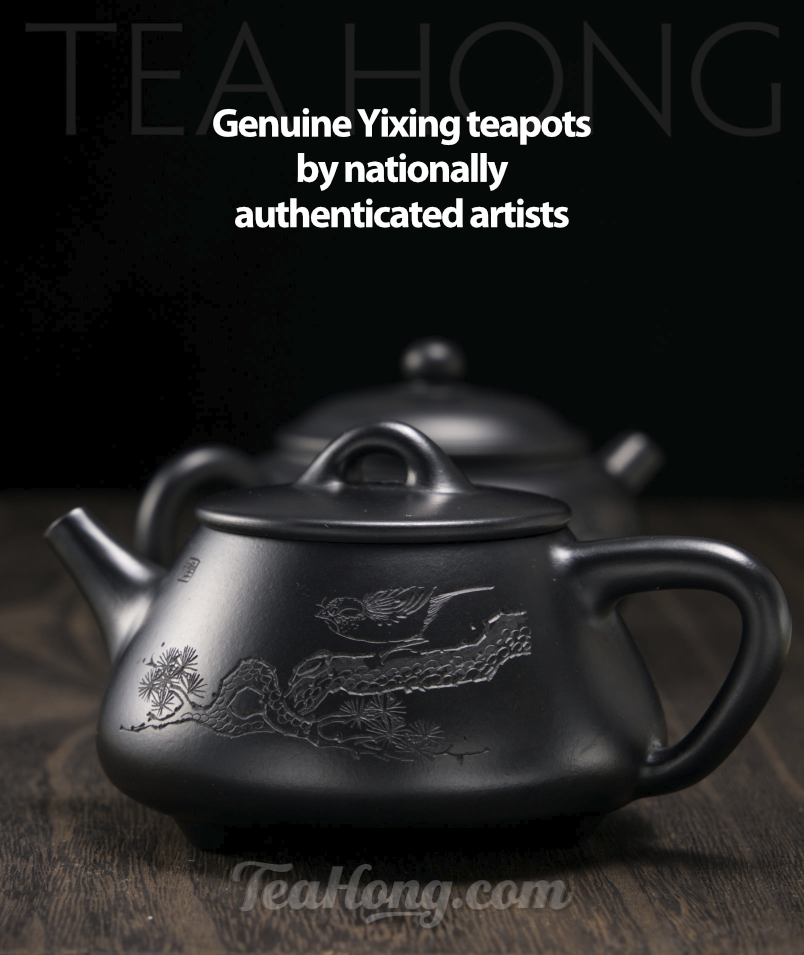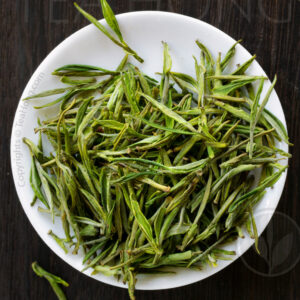What are Compressed Teas?

Tea Extraction (detail)
This Song Dynasty painting reveals in detail the huge difference in how the tea is consumed in the old days when the tea discus was in vogue. The man servant sitting on the bench is grinding the compressed tea into powder for his colleague at the table to whisk into tea drinks in the big bowl. This classic “dian cha fa” was later developed into the chanoyu in Japan.
The material nature of the compressed tea in those day would be much closer to the matcha nowadays, before it is grounded.
A Historical Form
Compressing lessens the bulkiness of the tealeaves for transportation. This is especially dramatic when the tealeaves are not tightly curled. In the ancient past, this was important when transportation were costly in the mountainous areas in the west and southwestern parts of China. <more> A compressed quantity of tea could also store better at a time when adequate packaging materials and technology were unavailable; the hardened surface of tea became a layer of insulation. That might have been one of the reasons why even after loose tea was announced as the national standard in China in the 14th century, compressed teas of low quality (1) were still the basic traded form with the ethnic groups and foreign merchants in those then remote areas. Compressed units of tea were like a currency there. Bartering with tea for horses and other commodities was practiced well into the 18th century.
It is important to state that although the tea discus was a national standard tea product form in earlier centuries, those that were produced for such trading were made with a much cruder variation than the standard. The current compressing process, which I think is a propagation of this deterioration, is far less sophisticated when compared to ancient documentation of the making for civilian and imperial use.
The Process
The compression process that is practiced nowadays is simple and can be seen in a few tea regions in China. There may be slight variations due to locally available (or unavailable) machines and the conditions of the tea involved. Basically the tea or crude tea (mao cha) is steamed briefly to soften and then pressed into stone or metal moulds. Where simple mould pressing machine is not available, a hammer or a pestle is used. The worker’s own body weight is also a traditional tool for compacting the bulk. The compressed form is then taken out for air drying or bake drying before it is wrapped and packed for distribution.
Curios or Epicure?
With the convenience of modern packing materials and processes and their ability to much more effectively maintain tea quality, the only two reasons for taking trouble to compress tea are:
- As a form of dosage package for convenience. Such as the mini Toucha, the tablet Zhangcha, and the Wuyi oolong bar.
- As a marketing presentation in more exotic looking traditional forms, such as the Pu’er chabing, the Hunan Fu-bricks,orGuangxiLuan baskets. These are used mostly as a form of collection for various keepsake purposes rather than for actual consumption. There are certainly small pockets of hobbyists fancying the myths of the compressed form and actually take the trouble of chipping up the compressed chunk to make tea with. They are only a tiny market share that supports the price of the product. The others are far more crucial — tourists, gift buyers, curios collectors, speculators, and alas, new tea shop owners whom I wish have not paid over price for this item. Because of their traditional life-style, ethnic nomadic Chinese in the border areas have grown up using large blocks of compressed tea, which their ancestors had liked because of the convenience in carrying on the horse back, but have come to like the one dosage per tablet idea very well, which is reflected in the increasing sales of the form.














